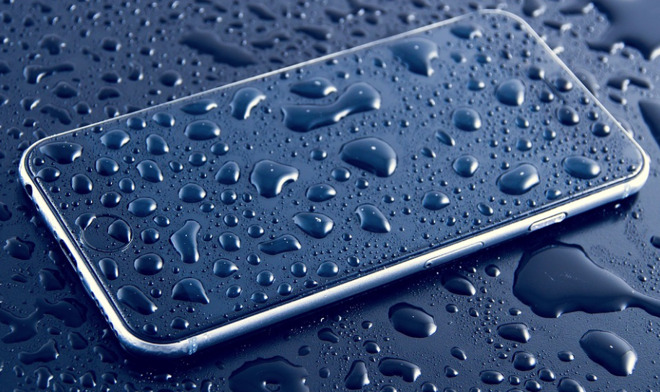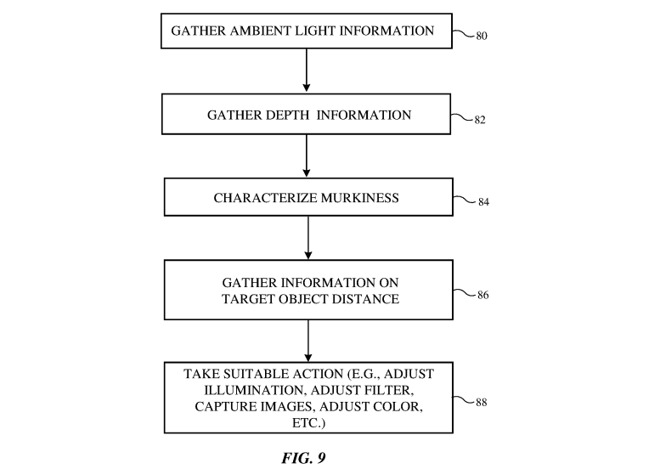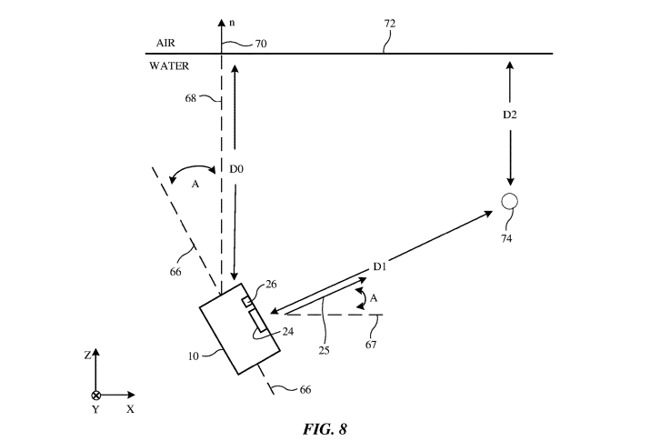Apple looking at ways to improve underwater iPhone photography
Adventurous iPhone users wanting to use their devices to take photographs underwater may enjoy better results in the future, as Apple is exploring ways to automatically adjust an image when the smartphone is immersed in water to offer the best picture possible.

Underwater photography isn't a new concept, as it has been an idea that has been used by both professional and amateur photographers to produce some imaginative shots, as well as to show off things that simply cannot be seen above water, like fish swimming around a coral reef. As technology progressed, the number of water resistant devices has increased, making it easier for practically anyone to try and take a photograph while submersed.
Despite the ease of taking shots underwater, the fact that cameras are designed to work on the belief conditions are ideal, like in open air with bright lights, means the results from within water could be disappointing. The lower amount of light and reduced visibility, as well as differences in light color, may make for an image that is far below the expectations of the user, which Apple suggests could take the form of an "undesired greenish color cast."
In a patent application published by the US Patent and Trademark Office on Thursday titled "Submersible Electronic Devices with Imaging Capabilities," Apple proposes a system that can automatically detect when a photograph is being taken underwater, and for the device to make a set of changes to the image to improve its overall appearance.

A flow chart of operations the filtering system would perform to automatically edit a photograph
Once the device detects the user is underwater, an assortment of sensors are employed to determine what needs to be changed in an image. These can include a color ambient light sensor, which could be used to measure ambient light spectra above and under water, which can determine how much light is being absorbed by the water, affecting the shot.
Other sensors including depth, distance, pressure, and orientation sensors, can also be used to find out other items, like how murky the water is, how far below the surface the device is, and how far away the subject is from the lens. Backscattered light could also be used by a light detector to find out the water's murkiness.
Taking all of this data into account, the system could make adjustments to the image, including changing the color to mitigate light absorbed or reflected by the water's surface, the color of the water itself in natural locations, and to enhance the subject in cases where murky water can make it harder to see.

A selection of measuring points the proposed system could take into account in order to optimally filter the image when underwater
Apple files numerous patent applications with the USPTO on a weekly basis, and though there is no guarantee the ideas posed will appear in future Apple products, the filings reveal areas of interest for the company.
In the case of this patent application, the array of sensors offered on an iPhone have the potential to perform many of its elements. Depending on Apple's implementation, it is entirely plausible for an underwater-mitigating image filtering system to be offered as part of a software update for iPhone models with water resistance ratings.
Sections such as distance detection, outside of computational photography or using the dual-lens camera system on some models, may be improved by the addition of a depth mapping-capable sensor on the rear. Current rumors suggest the 2019 iPhones could use a triple-camera system with a depth mapping-capable imaging sensor, one that could potentially be used for augmented reality applications and for improved Portrait photography.

Underwater photography isn't a new concept, as it has been an idea that has been used by both professional and amateur photographers to produce some imaginative shots, as well as to show off things that simply cannot be seen above water, like fish swimming around a coral reef. As technology progressed, the number of water resistant devices has increased, making it easier for practically anyone to try and take a photograph while submersed.
Despite the ease of taking shots underwater, the fact that cameras are designed to work on the belief conditions are ideal, like in open air with bright lights, means the results from within water could be disappointing. The lower amount of light and reduced visibility, as well as differences in light color, may make for an image that is far below the expectations of the user, which Apple suggests could take the form of an "undesired greenish color cast."
In a patent application published by the US Patent and Trademark Office on Thursday titled "Submersible Electronic Devices with Imaging Capabilities," Apple proposes a system that can automatically detect when a photograph is being taken underwater, and for the device to make a set of changes to the image to improve its overall appearance.

A flow chart of operations the filtering system would perform to automatically edit a photograph
Once the device detects the user is underwater, an assortment of sensors are employed to determine what needs to be changed in an image. These can include a color ambient light sensor, which could be used to measure ambient light spectra above and under water, which can determine how much light is being absorbed by the water, affecting the shot.
Other sensors including depth, distance, pressure, and orientation sensors, can also be used to find out other items, like how murky the water is, how far below the surface the device is, and how far away the subject is from the lens. Backscattered light could also be used by a light detector to find out the water's murkiness.
Taking all of this data into account, the system could make adjustments to the image, including changing the color to mitigate light absorbed or reflected by the water's surface, the color of the water itself in natural locations, and to enhance the subject in cases where murky water can make it harder to see.

A selection of measuring points the proposed system could take into account in order to optimally filter the image when underwater
Apple files numerous patent applications with the USPTO on a weekly basis, and though there is no guarantee the ideas posed will appear in future Apple products, the filings reveal areas of interest for the company.
In the case of this patent application, the array of sensors offered on an iPhone have the potential to perform many of its elements. Depending on Apple's implementation, it is entirely plausible for an underwater-mitigating image filtering system to be offered as part of a software update for iPhone models with water resistance ratings.
Sections such as distance detection, outside of computational photography or using the dual-lens camera system on some models, may be improved by the addition of a depth mapping-capable sensor on the rear. Current rumors suggest the 2019 iPhones could use a triple-camera system with a depth mapping-capable imaging sensor, one that could potentially be used for augmented reality applications and for improved Portrait photography.

Comments
Why that should be covered by warranty, I don't understand.
"An LCI will activate when it contacts water or a liquid containing water. The indicator's color is normally white or silver, but when it contacts water or a liquid containing water, it will turn fully red. An LCI won't activate because of humidity and temperature changes that are within the product's environmental requirements".
"To find out if the LCI in your device contacted liquid, find your product in the table below and locate the LCI or LCIs in your device. To help you see the LCI, use a lighted magnifying glass and angle the light or the device until you can see the LCI".
This table shows where the indicator (or indicators) are and how they look after being exposed to liquid:
"The ‘6’ in IP68 stands for protection against dust ingress while the ‘8’ stands for protection against liquid ingress. Both are at the very highest level possible which means the iPhone XS and iPhone XS Max offer among the best dust and water-resistance possible. Yes, water-resistant and not waterproof. There’s a world of difference between the two terms and you should treat your iPhone accordingly".
"The iPhone XS and iPhone XS Max water-resistance capabilities are not as good as the Apple Watch Series 3 or Series 4 which means you should not take the phone swimming with you".
"In typical Apple fashion, the IP68 certification of the iPhone XS is better than what you will find in other IP68 devices. In fact, Apple even says the iPhone XS and iPhone XS Max are beer, tea, and coffee repellent".
http://www.iphonehacks.com/2018/09/iphone-xs-ip68-water-resistant-explained.htmlhttps://www.bluewaterphotostore.com/kraken-smart-phone-housing